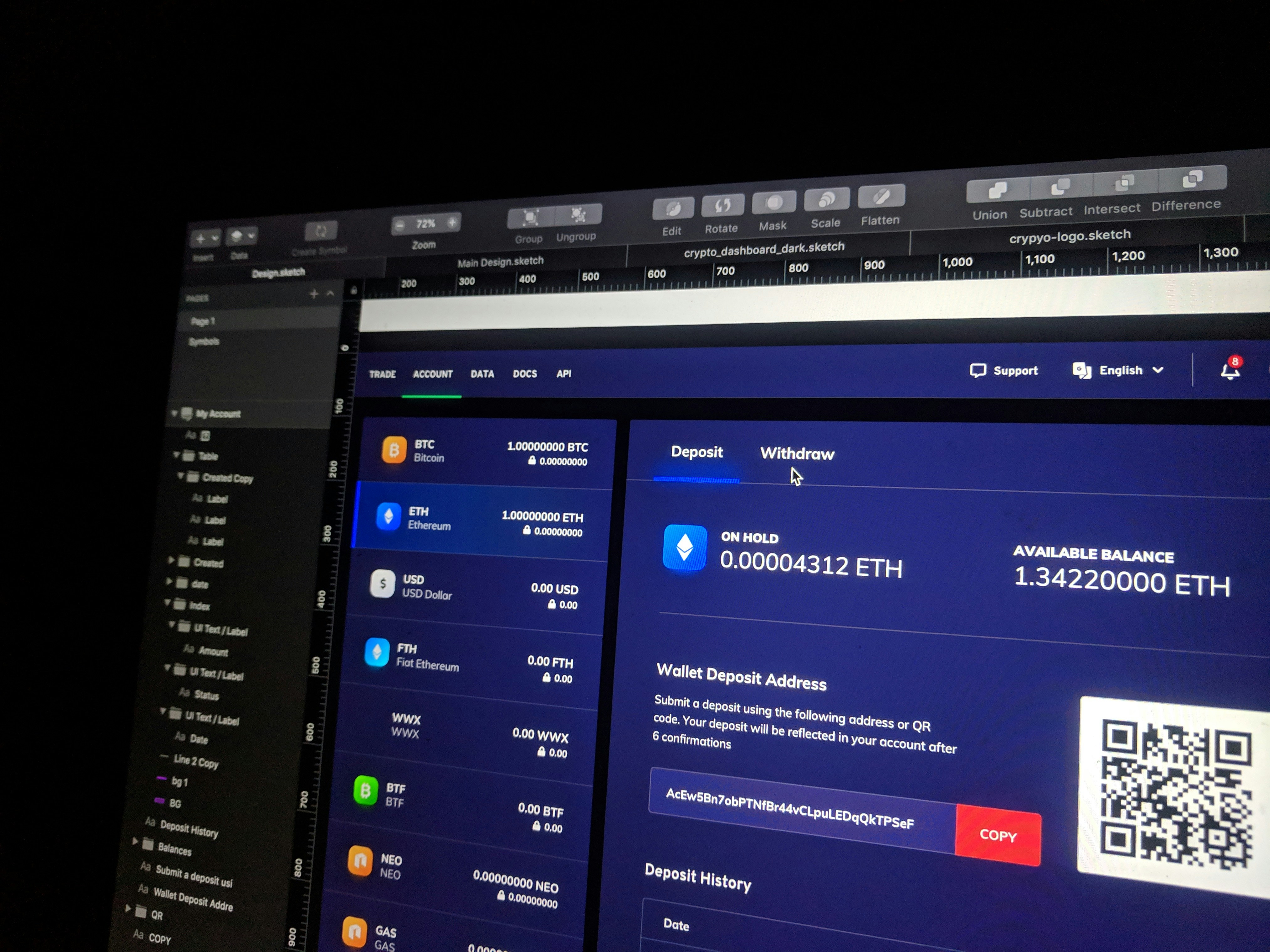
Introduction to Crypto Wallets
A crypto wallet is a digital tool that allows individuals to store, send, and receive cryptocurrencies securely. It functions similarly to a traditional wallet, but instead of holding cash or cards, a crypto wallet manages publicly available and private keys essential for accessing and transacting with digital currencies. The security of these keys is of utmost importance, as losing access to them could result in the loss of funds. Therefore, understanding the various types of crypto wallets and their functionalities is a critical aspect for anyone engaging in cryptocurrency transactions.
There are primarily two categories of crypto wallets: hot wallets and cold wallets. Hot wallets are connected to the internet and provide convenience for frequent transactions. They include web wallets, mobile wallets, and desktop wallets. These wallets are user-friendly and allow for quick access to cryptocurrencies, making them suitable for everyday use. However, their online nature also makes them more susceptible to security threats such as hacking.
Cold wallets, on the other hand, are offline storage solutions designed for enhanced security. They include hardware wallets and paper wallets. Hardware wallets are physical devices that securely store your keys offline, making them less vulnerable to online attacks. Paper wallets involve the physical printout of keys and QR codes but require careful handling to prevent loss or damage. Utilizing a cold wallet is advisable for long-term storage of crypto assets, as it minimizes the risk associated with internet connectivity.
The basic functions of a crypto wallet go beyond mere storage; they serve as crucial instruments for securely managing digital assets. Without a crypto wallet, users cannot engage in trading, investing, or holding cryptocurrencies. Therefore, choosing the right type of wallet aligns with an individual’s trading habits and security preferences, ultimately enhancing the user experience in the cryptocurrency market.
Choosing the Right Wallet
Selecting an appropriate crypto wallet is essential for securely managing your digital assets. When evaluating a wallet, several key factors should be considered to ensure that it meets your individual needs and preferences.
Firstly, security features are paramount. Look for wallets that utilize encryption, two-factor authentication (2FA), and backup options. Wallets with robust security measures are less prone to hacks and unauthorized access. It is advisable to research the wallet’s history and user reviews concerning security breaches, as this information can provide insights into its reliability.
User-friendliness is another crucial factor. A wallet should offer an intuitive interface, especially for beginners who may not be familiar with the complexities of cryptocurrency transactions. Opting for a wallet that simplifies the setup process while providing clear instructions can enhance your overall experience. Some wallets also offer educational resources to help new users navigate the digital asset landscape.
Compatibility with various cryptocurrencies is vital for those looking to diversify their portfolios. Not all wallets support every cryptocurrency; therefore, it is essential to check that the wallet you choose supports the specific coins or tokens you wish to store or trade. Many wallets now offer multi-currency support, allowing users to manage different assets under a single platform, which can be very convenient.
Lastly, consider whether the wallet is custodial or non-custodial. Custodial wallets, which are managed by third-party services, may offer ease of use but require trust in the provider to safeguard your assets. Non-custodial wallets give users full control over their private keys and funds, enhancing security but placing the responsibility on users to manage and protect their assets adequately. Evaluating these aspects will significantly affect your crypto wallet experience and safety.
Types of Crypto Wallets
When embarking on the journey of cryptocurrency ownership, understanding the various types of crypto wallets is essential. Each wallet type has unique features catering to different security and accessibility needs.
Software wallets are among the most popular options, typically available in two forms: mobile and desktop. Mobile wallets, such as Trust Wallet or Coinbase Wallet, allow users to manage their cryptocurrencies directly from their smartphones. They offer convenience and easy access, enabling transactions on the go. However, being connected to the internet renders them more vulnerable to hacking attempts. On the other hand, desktop wallets, like Exodus or Electrum, require installation on a personal computer. They provide a higher level of security compared to mobile options, as they can work offline, reducing the risk of online threats. Nevertheless, the potential for loss increases if a user fails to keep their computer secure or backs up their wallet properly.
Hardware wallets represent a more secure alternative, often recommended for serious investors. Devices such as Ledger Nano S or Trezor store private keys offline, thus minimizing risks associated with cyber attacks. They require a physical device, making them less convenient for daily transactions but significantly more secure for long-term storage. The downside is the initial cost and the need to physically manage these devices.
Lastly, paper wallets serve as a low-tech, yet secure option for storing cryptocurrencies. A paper wallet involves printing out the private and public keys on a physical document. While this method is impervious to hackers, it is crucial to keep the paper safe from physical damage or loss, as these actions can result in complete and irrevocable loss of funds.
Choosing the right type of crypto wallet depends largely on individual needs, comfort with technology, and the level of security one seeks for their digital assets. Each type has its trade-offs, making it essential for users to select the option that aligns best with their cryptocurrency strategy.
Downloading Your Wallet
To begin your journey into the world of cryptocurrencies, the first step is downloading a secure crypto wallet. This software application serves as a digital repository for your cryptocurrency, allowing you to send, receive, and manage your digital assets conveniently. Popular options for software wallets include Exodus, Coinbase Wallet, and Trust Wallet, each offering unique features and benefits. Follow these step-by-step instructions to successfully download your chosen wallet.
First, you need to select the cryptocurrency wallet that best suits your needs. For example, Exodus is user-friendly and supports multiple cryptocurrencies, making it a suitable option for beginners. To download Exodus, visit the official website at exodus.com. There, you will find options for different devices, including Windows, Mac, and mobile versions. Always ensure that you are on the official site to avoid downloading compromised software.
For those preferring an extensive ecosystem with trading capabilities, the Coinbase Wallet might be ideal. Navigate to coinbase.com and select the wallet option, ensuring you are on the official site. You can download it as a mobile app or use the browser extension. Again, double-check the URL to confirm it’s legitimate.
Trust Wallet is another excellent option, particularly for those who prioritize decentralization. To retrieve this wallet, go to the official app store or trustwallet.com for the latest version. Always use trusted sources to prevent potential scams that could jeopardize your crypto holdings.
After downloading, install the wallet by following the on-screen prompts. This process typically involves agreeing to terms of service and creating an account. Remember, securing your wallet with strong passwords and enabling two-factor authentication if available can greatly enhance your security. Following these guidelines will set you up for a secure and efficient crypto experience.
Setting Up the Wallet
Setting up a crypto wallet is a straightforward process that can be completed in just a few minutes. After downloading your preferred wallet application, the first step is to create an account. You will typically need to provide basic information, such as your email address and a secure password. Ensure that your password is strong and unique to protect your digital assets effectively. Some wallets may require email verification to activate your account, so check your inbox for a confirmation email and follow the instructions provided.
Once your account is activated, the next crucial step is to generate a recovery phrase, often referred to as a seed phrase. This phrase is a series of 12 to 24 random words that serves as a backup to access your wallet. It is imperative to write down this recovery phrase and store it in a safe location, preferably offline. In the event you lose access to your wallet or your device, this phrase is the only way to regain control of your funds. Sharing this phrase with anyone can jeopardize the security of your crypto wallet, so ensure it remains private.
After generating your recovery phrase, follow the wallet’s prompts to confirm that you have noted it down correctly. This step enhances security and ensures the recovery phrase is firmly committed to memory or securely stored. Furthermore, many wallets will offer the option to back up your wallet and store your assets securely. This often involves creating a backup file that can be encrypted and stored on an external drive or cloud storage. Regularly updating this backup is essential as you add or make changes to your wallet. Keeping your crypto wallet properly backed up guarantees that your investments remain safe and accessible at all times.
Securing Your Wallet
When it comes to managing a crypto wallet, ensuring its security is paramount. A secure wallet helps protect your digital assets from potential threats, such as hacking or phishing attempts. There are several best practices that every wallet user should adhere to in order to maintain a strong security posture.
One of the primary steps involves enabling two-factor authentication (2FA). This additional layer of security requires not just your password but also a second form of verification, such as a code sent to your mobile device. By requiring this extra verification step, you significantly reduce the risk of unauthorized access to your crypto wallet.
Additionally, it is crucial to keep your wallet’s software up to date. Wallet providers often release updates that include security patches and new features. By regularly updating your crypto wallet, you ensure that you benefit from the latest security improvements and are better protected against emerging threats.
Backing up your wallet information is another essential practice. Regular backups create copies of your wallet data, such as transaction history and private keys. These backups can be stored in a secure location, ensuring that you can regain access to your crypto wallet should you encounter any issues with your device.
Perhaps most critically, it is vital to keep your private keys confidential. Your private keys are the gateway to your digital assets, and any compromise could result in loss of funds. Never share your private keys with anyone, and be cautious about where you store them. Use hardware wallets or secure password managers to safely manage your keys away from potential threats.
Incorporating these practices can significantly enhance the security of your crypto wallet. By ensuring that you implement 2FA, regularly update your software, back up your information, and maintain the privacy of your keys, you build a strong foundation to protect your digital assets effectively.
Adding Funds to Your Wallet
After successfully creating your crypto wallet, the next important step is to fund it. There are several methods available for adding cryptocurrency to your wallet, ensuring that you can choose the option that best suits your needs.
One of the most straightforward ways to add cryptocurrency to your wallet is by purchasing it through an exchange. There are numerous exchanges available that offer a wide range of cryptocurrencies. To begin, you would need to create an account on the exchange of your choice, validate your identity, and link a payment method such as a bank account or credit card. Once your account is set up, you can buy cryptocurrency directly, which will typically be credited to your exchange account. From there, you can transfer the purchased crypto to your wallet by using the wallet’s receiving address.
Another common method to fund your crypto wallet is by receiving cryptocurrencies from other users. This is particularly useful if you have friends or contacts already involved in crypto trading. To receive crypto, you will need to generate a receiving address from your wallet. This address serves as your wallet’s unique identifier on the blockchain. Most wallets provide a straightforward process for generating this address, often presented as a QR code and a string of alphanumeric characters. Share this receiving address with the person sending you cryptocurrency, ensuring they input it correctly to avoid any loss of funds.
By either purchasing cryptocurrency through exchanges or receiving it from others, you can successfully add funds to your newly created crypto wallet. This flexibility allows you to become more involved in the cryptocurrency space, as you embark on your journey of exploration and investment in digital assets.
Sending and Receiving Crypto
Utilizing a crypto wallet for sending and receiving digital currencies is a straightforward process, even for those who are new to cryptocurrency. In this guide, we will outline the necessary steps to perform these transactions efficiently.
To initiate a transaction, first, access your crypto wallet and locate the ‘Send’ or ‘Transfer’ option. This option typically appears prominently on the dashboard of the wallet interface. Once you click on it, you will be prompted to enter the recipient’s crypto address. This is a unique string of alphanumeric characters specific to the recipient’s wallet and must be entered accurately to ensure successful delivery of the cryptocurrency.
After inputting the recipient’s address, you will need to specify the amount of cryptocurrency you wish to send. It is crucial to double-check both the address and the amount before proceeding, as transactions in the cryptocurrency world are often irreversible. Once confirmed, you may also have the option to add a note or memo to the transaction, although this is typically optional.
Before completing the transaction, most wallets will require you to review the details and confirm that everything is correct. Additionally, keep an eye out for any transaction fees that may apply, as these can vary depending on the network congestion at the time of the transfer. Once satisfied, you can finalize the transaction by clicking the ‘Send’ button.
Receiving cryptocurrency follows a similar process. To receive funds, you will need to share your wallet’s address with the sender. You can usually copy this address directly from your wallet by selecting the ‘Receive’ or ‘Deposit’ option. Make sure the sender has this address correctly copied to prevent any issues. After the sender initiates the transaction, you will see the incoming funds appear in your wallet, typically within a few minutes, depending on the network’s processing speed.
In conclusion, sending and receiving cryptocurrency using a digital wallet is a simple task that can be accomplished in a short time. By following the outlined steps, you can confidently manage your crypto transactions without any technical knowledge.
Conclusion and Future Steps
In conclusion, setting up a free crypto wallet is a straightforward process that can be accomplished in under ten minutes. This guide has highlighted the essential steps required to create a wallet for managing your cryptocurrency assets securely. We discussed the different types of wallets available—hardware, software, and online wallets—allowing you to select the most suitable option based on your individual needs and level of expertise. Understanding the unique features and security measures each type offers is crucial for optimal wallet management.
Having established your crypto wallet, it is vital to engage in continuous learning regarding cryptocurrency trends and wallet security practices. The cryptocurrency market is constantly evolving, with new technologies and security protocols emerging regularly. By staying informed about these innovations, you will be better equipped to protect your assets and make informed decisions in this dynamic environment.
We encourage you to explore further resources and communities that focus on cryptocurrency education. Online forums, workshops, and webinars can provide valuable insights into wallet management, investment strategies, and advanced security practices. Engaging with experts and participating in discussions can significantly enhance your understanding of the complexities within the crypto sphere.
Furthermore, as a cryptocurrency enthusiast, familiarizing yourself with the market trends is essential to navigate investments wisely. Keeping track of market fluctuations, regulatory changes, and technological advancements can help you anticipate potential risks and opportunities. Therefore, prioritize ongoing education in the realm of cryptocurrencies, ensuring you remain well-informed and prepared for any developments that may arise.



